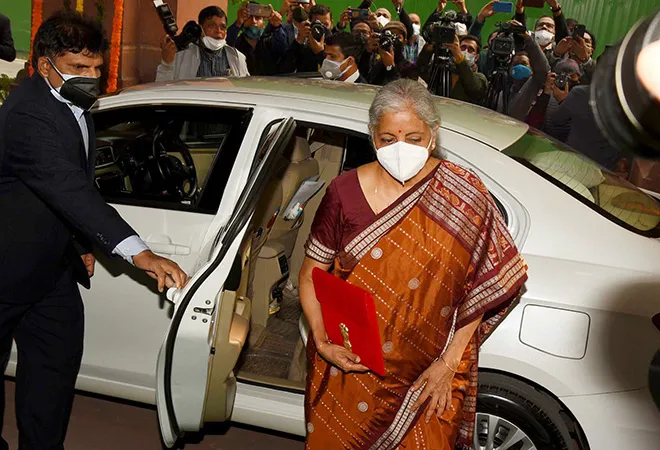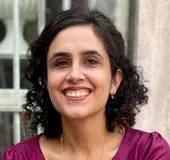-
CENTRES
Progammes & Centres
Location
The current unemployment and high educational inequity levels continue to weigh heavy on the country’s youth

This brief is a part of the Budget 2022: Numbers and Beyond series.
The impact of the pandemic has been devastating on education, mental health, and prospects for the youth, including the prickly issue of unemployment. This year’s budget, the second one after the onset of COVID-19, was expected to assuage the burden caused by loss of learning, loss of jobs, and accrued trauma of the past two years.
The government by its own admission has not been able to gauge the impact of repeated lockdowns on the education sector as the available official data dates back to 2019-20, as stated in the Economic Survey 2021-22. The education budget saw a tepid increase of over 11 percent from INR 93,224 crore last year (revised estimate INR 88,001 crore ) to INR 104,278 crore this year, still falling short of the desired 6 percent of the GDP that has been recommended in every National Education Policy since 1968. There is a big push towards digital learning in this budget. The ‘One class-one TV channel’ programme of PM eVIDYA has been expanded from 12 to 200 channels, which will be made available in all regional languages. There is a proposal to set up a digital university with a hub and spoke model, the creation of a high-quality digital content library, 750 e-labs in science and mathematics and 75 e-labs for skilling.
Digital education has led to increased inequity in India. The Economic Survey quoted the Annual Status of Education Report (ASER) 2021 on the deepening digital divide, where more than half the children having smartphones (53.8 percent) nationwide are not able to use the device for educational purposes.
The education budget saw a tepid increase of over 11 percent from INR 93,224 crore last year (revised estimate INR 88,001 crore ) to INR 104,278 crore this year, still falling short of the desired 6 percent of the GDP that has been recommended in every National Education Policy since 1968.
The ASER report also brings out the adverse impact on school enrolment amongst young children. The report states that children between the age of 6 and 14 years, ‘not currently enroled in schools’ increased from 2.5 percent in 2018 to 4.6 percent in 2021. There is an urgent need to strengthen public school education in India. The National Education Policy encourages privatisation of education, but the experience with the pandemic has shown that the government cannot cede its role in education. Many surveys, including the one by ASER, have brought forth how children, especially in rural areas, moved out of private to government schools for various reasons, including shut down of low-cost private schools, financial distress faced by parents, and families migrating back to villages.
The Economic Survey recognises that public schools need to be equipped with additional support, in terms of teacher-pupil ratio, classroom space, and teaching/learning materials, to absorb students migrating from private schools and from urban to rural areas, and yet there is little provision for this in the budget. The Samagra Shiksha Abhiyan, the biggest school education scheme was allocated INR 37,383.36 crore, an increase of more than INR 6,000 crores from Budget 2021, but still less than 2019, when it was allocated INR 38,750.50 crore.
The pandemic’s impact on children’s nutrition has also been detrimental, and it was expected that PM POSHAN Abhiyaan would be strengthened this year, but the mid-day meal scheme saw a drop in allocation from INR 11,500 crore in 2021-22 to INR 10,233 crore in 2022-23.
The inclusion of mental health in this year’s budget is a timely intervention. The National Mental Health Survey (2015-16) reported that 76 to 85 percent of people in India with severe mental disorders received no treatment. This is likely to have worsened during the pandemic. In the previous budget, the allocation for mental health was a meagre INR 597 crore under MoHFW, of which INR 500 crore was disbursed to the National Institute of Mental Health and Neuroscience (NIMHANS) in Bengaluru.
There are a few initiatives already underway to address mental health issues during the pandemic, like NIMHANS’s national, toll-free helpline and another toll-free helpline by the Ministry of Social Justice and Empowerment.
The budget this year has made provision to improve access to quality mental health counselling and care services with a national tele-mental health programme. The programme will be operated under a network of 23 tele-mental health centres of excellence, with NIMHANS as the nodal centre and the International Institute of Information Technology, Bengaluru to provide technical support. There are a few initiatives already underway to address mental health issues during the pandemic, like NIMHANS’s national, toll-free helpline and another toll-free helpline by the Ministry of Social Justice and Empowerment.
Prime Minister Modi said that the budget ensures a bright future for the youth. India has the largest population of youth in the world with the median age being 28 years. But the young have been a blind spot in policymaking. The National Youth Policy (2014) lists education, entrepreneurship, employment and skill development, prioritising good health, sports, and participation in politics and governance as the key to empowering youth. Even though the policy has been articulated, not much has been done to put it into practice.
The prospects for the youth have been severely constrained in the last two years, as recent protests over jobs in the railways have demonstrated. Studies have shown that younger workers suffered more job losses before COVID struck, compared to other age groups. The budget proposed that the Production Linked Incentive (PLI) Scheme of the Centre has the potential to create 60 lakh new jobs during the next five years. PM GatiShakti was linked to jobs and entrepreneurial opportunities for all, especially the youth. The government announced a task force for the animation, visual effects, gaming and comics (AVGC) sector, as there is immense potential to employ youth.
The government will provide support to sunrise opportunities that provide employment opportunities for the youth in artificial intelligence (AI), geospatial systems and drones, semiconductor and its ecosystem, space economy, genomics and pharmaceutic green energy, and clean mobility systems.
India faces a huge shortage in skilling, and there are several government programmes initiated over the last few years to address the need for skilling, which has a direct impact on employability. But the budgetary outlay for skilling has always been relatively modest. In this budget, the government announced a Digital Ecosystem for Skilling and Livelihood—the DESH Stack e-portal to skill, reskill, and upskill citizens through online training.
The government will provide support to sunrise opportunities that provide employment opportunities for the youth in artificial intelligence (AI), geospatial systems and drones, semiconductor and its ecosystem, space economy, genomics and pharmaceutic green energy, and clean mobility systems.
The spending on higher learning increased from INR 38,350.65 crore to INR 40,828.35 crore. There was a huge boost to promote medical education, for the establishment of new medical colleges and increase of seats in existing government medical colleges and for the National Mission in Education through ICT (NMEICT), which promotes the uptake of Information and Communication Technology (ICT) amongst youth.
While youth schemes had an overall increase, they are nowhere near enough to meet the needs and aspirations of the youth demographic. The sports budget, as always was short-changed, though it increased by INR 305.58 crore with an emphasis on Khelo India. Rashtriya Yuva Sashaktikaran Karyakram, an umbrella scheme for the all-round development of the youth received INR 138 crore, an added 29 crore from the previous year. The National Service Scheme (NSS) was granted INR 283.50 crore, from INR 231 crore last year and the National Youth Corps was allocated INR 75 crore.
The views expressed above belong to the author(s). ORF research and analyses now available on Telegram! Click here to access our curated content — blogs, longforms and interviews.

Sunaina Kumar is a Senior Fellow at ORF and Executive Director at Think20 India Secretariat. At ORF, she works with the Centre for New Economic ...
Read More +